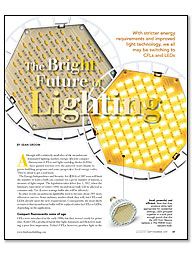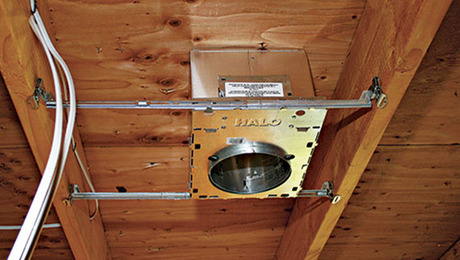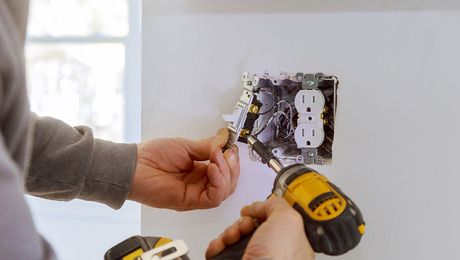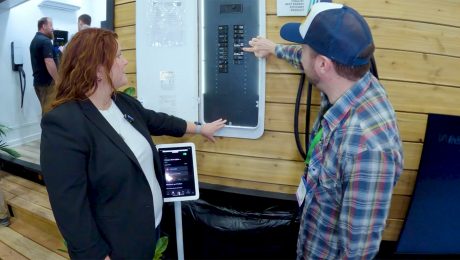The Bright Future of Lighting
With stricter energy requirements and improved light technology, we all may be switching to CFLs and LEDs.

Synopsis: Thanks to technological advancements and a growing interest in energy-saving devices, compact fluorescents (CFLs) and light-emitting diodes (LEDs) are making headway in the world of lighting, and both are viable contenders to make inroads in a marketplace long dominated by incandescents. CFLs are available as replacement bulbs for every application and provide multidirectional light for ambient, task, and decorative fixtures. One downside to CFLs is that they contain a small amount of mercury; CFL-recycling programs are available. LEDs are a directional lighting source, and also work well in ambient, task, and decorative fixtures. Savvy homeowners may find that a mix of CFL and LED bulbs will provide the best solution to household-lighting needs. This article includes sidebars on light color and light efficacy.
Although still a relatively small slice of the incandescent dominated lighting market, energy-efficient compact fluorescents (CFLs) and light-emitting diodes (LEDs) have gained traction over the past few years thanks to green-building programs and some progressive local energy codes. They’re about to get a real boost.
The Energy Independence and Security Act (EISA) of 2007 soon will limit the number of watts a bulb can consume for a given number of lumens, a measure of light output. The legislation takes effect Jan. 1, 2012, when the luminary equivalent of today’s 100w incandescent bulb will be allowed to consume only 72w. (Lower-wattage bulbs also will be affected.)
In other words, incandescent lightbulbs need to become about 28% more efficient to survive. Some industry insiders think they will, but CFLs and LEDs already meet the new requirements. Consequently, the most likely scenario is that incandescent bulbs will be replaced either by CFLs or LEDs, depending on the application.
Compact fluorescents come of age
CFLs were introduced in the early 1990s, but they weren’t ready for prime time. Early CFLs produced harsh blue light, hummed, and flickered, making a poor first impression. Today’s CFLs, however, produce light in the 2700°K range, mimicking the warm, amber-hued light of incandescent bulbs. Also, the old magnetic ballasts have been replaced with quiet electronic ballasts that don’t flicker.
CFLs are dramatically more efficient than incandescent lightbulbs, using between 50% and 80% less energy, and they last for about 10,000 hours, nearly 10 times longer than incandescents. They also cost dramatically more. However, replacing one 50¢, 75w incandescent bulb with a $3.50, 19w CFL saves 563kwh of electricity over the life of the bulb. That comes to about $75 in savings, depending on the cost of electricity where you live.
On the downside, a typical CFL contains somewhere between 4 mg and 5 mg of mercury. Critics of CFLs highlight the health and environmental hazards of mercury, and special precautions should be taken if the bulbs break in your house. Proponents argue that the mercury in a CFL is far less than the amount of mercury emissions that would be released from a coal-fired power plant if you were using an incandescent bulb. Regardless, when a CFL burns out, it must be recycled so that the mercury doesn’t end up polluting the environment. Some retailers of CFLs, including Ikea and The Home Depot, offer CFL recycling. To find other recycling locations, visit www.epa.gov.
For more photos and details, click the View PDF button below:


























